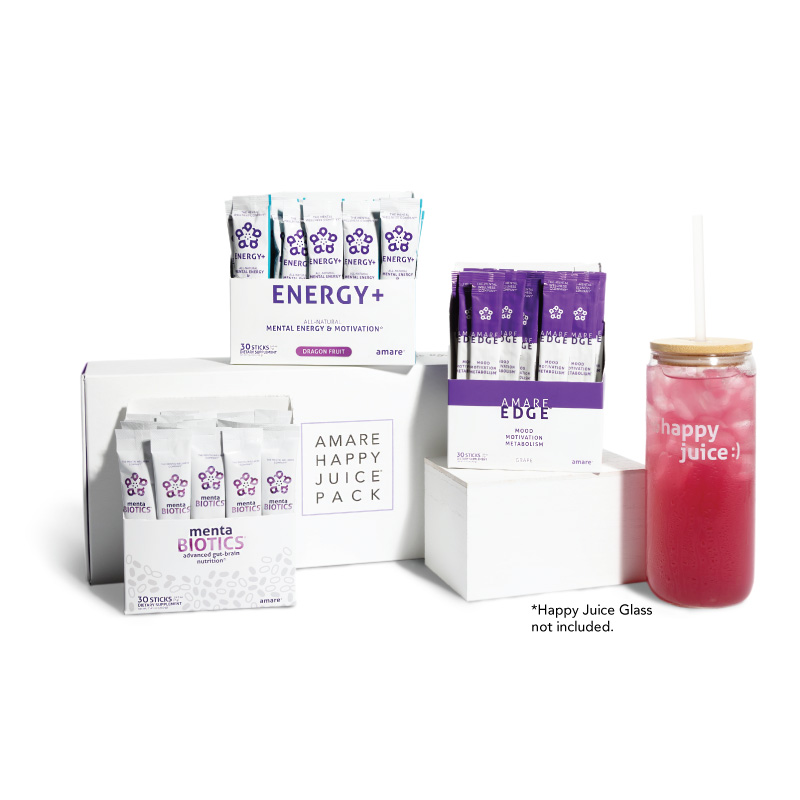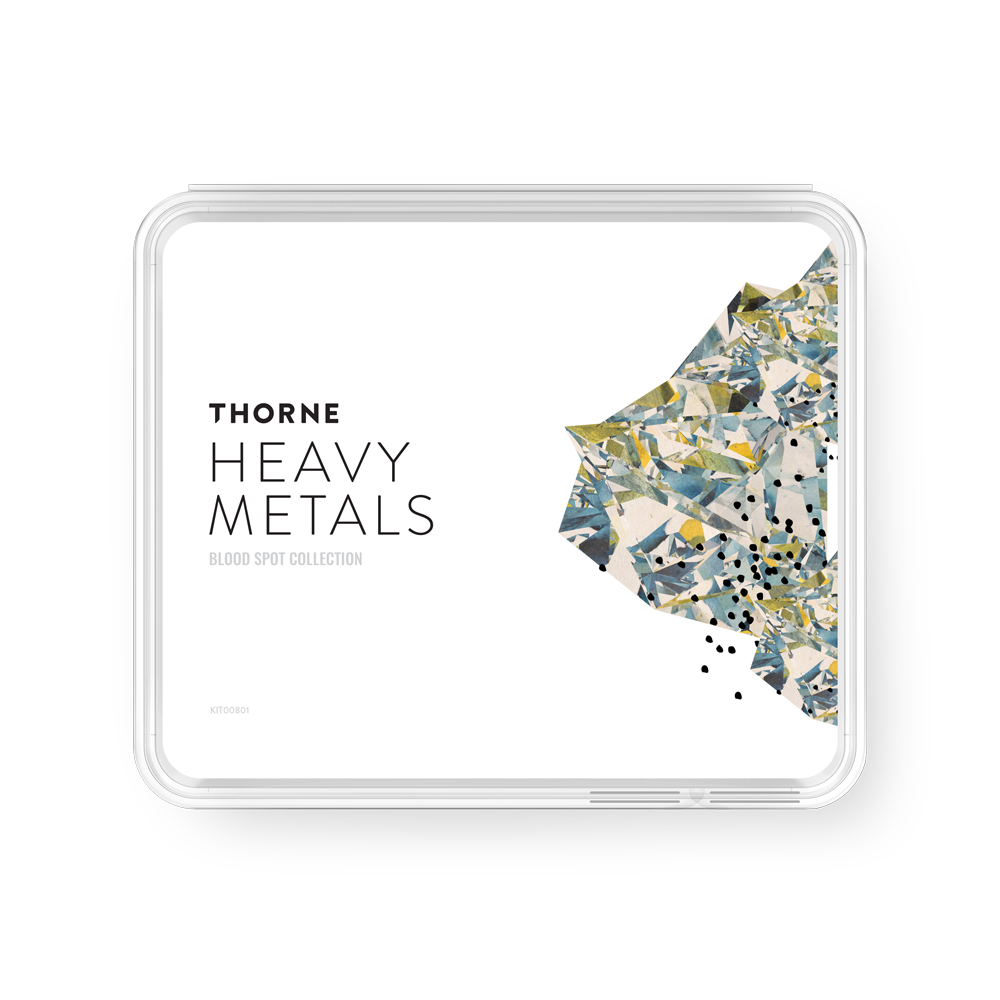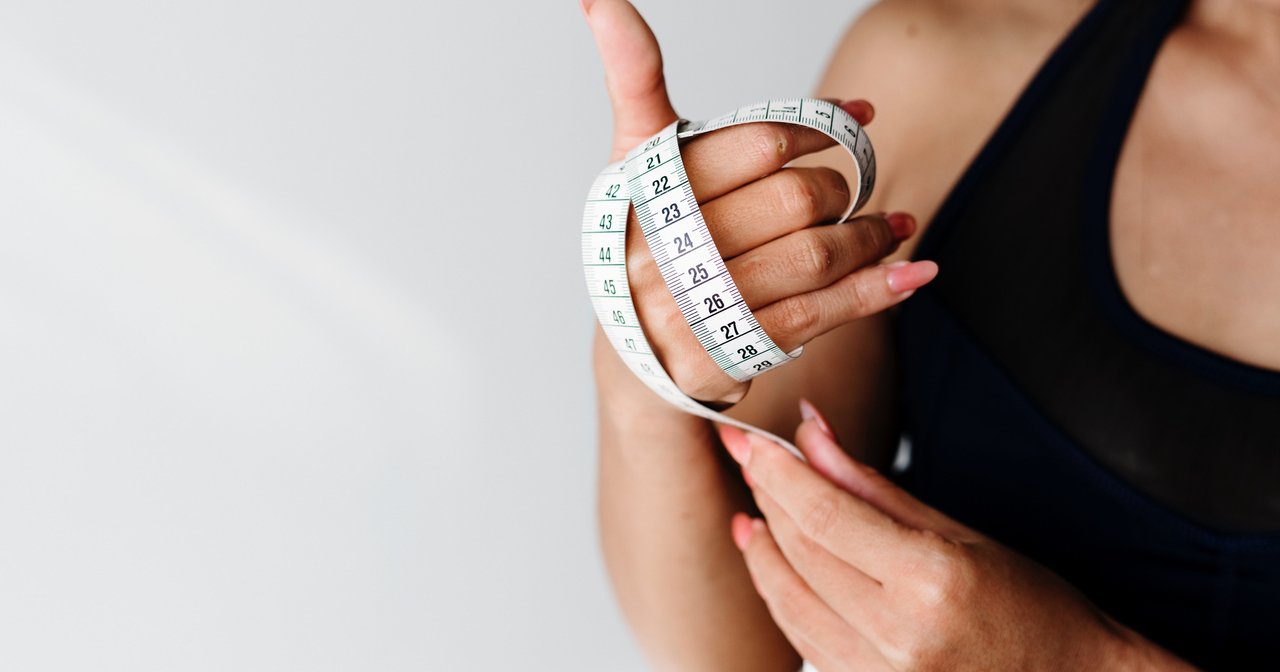Listen on: Apple Podcasts | Spotify
“Do detox diets work?” “What do you think about me going on a 12-day water fast?” “Should I get a juicer and start juicing?”
When I’m faced with these questions or conversations, I often try to do my best to dodge them, not because I don’t have something to say, but for a couple of other reasons.
First, the answer takes longer than most people are willing to listen to (hence, this full article to answer the question).
Second, people aren’t really asking me for my opinion, as much as they’re looking for approval, thinking that doing a detox is a “healthy choice.”
Instead of detox, you might wonder about juicing, cleansing, water fasts, drinking celery juice, and most of the other versions of detox programs popularized by celebrities or pseudo-science “experts.”
As with other questions, such as “Is intermittent fasting good for you?” or “Is coffee bad for you?” or “How much protein should I eat?” I decided to sit down and write out an answer, once and for all.
I recommend reading this from beginning to end the first time. I’ve written it just as I’d explain it if you asked me that initial question. However, if you want to jump around, I’ve divided the article into the following sections to make it easy to navigate.

Feel Better Fast. Guaranteed.
Energy+, EDGE, and MentaBiotics make up the Happy Juice supplement stack, with ingredients clinically proven to:
- decrease anxiousness scores by 55%
- decrease irritability scores by 60%
- decrease fatigue by 64%
- decrease anger 54%
- decrease tension by 45%
- decrease confusion by 43%
- decrease overall distress by 49%
- increase good bacteria by 70%
- decrease negative mood by 105%
- increase positive mood by 211%
What are toxins?
Toxins are compounds either produced by living organisms, or through synthetic means, which are poisonous or harmful to the organisms that make them, or to other organisms.
Though we tend to think of toxins as chemicals produced by modern-day manufacturing, toxins have been around since the beginning of time.
Some of the more common “natural” toxins include glycoalcaloids, produced in the green spots of stored potatoes, mycotoxins produced by fungi in different foods, aflotoxins in nuts, rice, fruit, and milk, and lectins in beans.
These aren’t the types of toxins commercialized detox programs target, though. When you think of detoxing, you probably think of chemicals related to plastics, pollution, or heavy metals.
Modern-day manufacturing creates numerous new chemicals each year, but not all manufacturing-related chemicals are toxic.
Are there really 84,000 chemicals used in commerce today?
An often-cited stat is that “There are more than 84,000 chemicals used in commerce today.” This number is a huge exaggeration. The “84,000” comes from a list of chemicals in the EPA database. However, the list includes many duplicates of the same chemical, as well as the names of chemicals that are not used.
The more accurate number is about 7700 chemicals used in commerce.
Most detox programs focus on eliminating toxins like persistent organic pollutants, phthalates, and heavy metals, which I’ll briefly review next.
Persistent Organic Pollutants (POPs)
Persistent organic pollutants (POPs) were used in flame retardants, pesticides, paints, coolants, and lubricants until around the 1970s, when Europe, the United States, and Australia began banning their use.
Some of the well-known POPs include dichlorodiphyenyltrichloroethane (DDT), hexachlorobenzene (HCB), polychlorinated biphenyls (PCBs), and dioxins.
The levels of POPs in the environment, and in people, continue to decrease. However, measurable levels of POPs are still detected in blood and body fat of humans. They’re also found in almost all food products, though there is much debate about whether the levels found in today’s food supply affect one’s health.
Persistent organic pollutants may cause endocrine disruption, cardiovascular disease, neurological and developmental defects, cancer, and other metabolic diseases.
Phthalates
Phthalates are used in cosmetics, food packaging, plastics, and even the coatings of some nutritional supplements, though their use in any of these categories is rare today compared to 20 years ago.
In cosmetics, dibutyl phthalate (DBP) was used as a plasticizer for nail polish, dimethyl phthalate (BMP) in hair spray, and diethyl phthalate (DEP) as a fixative in fragrances.
DEP is still used today in fragrances. Some research suggests it could lead to male reproductive issues, but there isn’t significant research outside of a few animal studies.
Bisphenol A (BPA) is another controversial chemical, often used in food packaging along with phthalates. The popularity of bottled water caused a sharp increase in BPA exposure until concerns of the chemical came to light. Today, many water bottles are now BPA-free.
Another source of BPA you might not be aware of is cash register receipts. That’s really bad news if you work behind a register.
BPA has been linked to reproductive and cardiovascular changes, as well as diabetes. However, the connection to these diseases could also be caused by the types of foods often found in plastic containers…processed and fast foods.
Heavy Metals
Heavy metals include mercury, lead, cadmium, arsenic, and aluminum.
Heavy metal toxicity can cause:
- Tingling hands and feet
- Digestive issues
- Kidney dysfunction
- Memory problems
- Mental fog
- Tremors
- Headaches
- Infertility
- Anxiety
- Depression
My mom was a dental hygienist when I was a kid. She handled mercury with bare hands because no one thought it could penetrate the skin. Unfortunately, it does penetrate the skin, and is toxic at very low doses.
Though it isn’t handled with bare hands today, many people still have mercury fillings, which could slowly drop mercury into their bodies.
In addition, 50 tons of mercury gets released into the atmosphere each year from coal-burning power plants, where it can be inhaled or make it to the ground where it enters our drinking water.
Thimerosal And The Flu Vaccine
Thimerosal is a mercury-containing compound that was used as a preservative in most vaccines until 1999. Due to concerns about mercury, it was removed from most vaccines, but is still used in “multi-dose vials” of the flu vaccine.
According to the Center for Disease Control (CDC):
“To produce enough flu vaccine for the entire country, some of it must be put into multi-dose vials. When each individual vaccine dose is drawn from the vial with a fresh needle, it is possible for microbes to get into the vial. So, this preservative is needed to prevent contamination of the vial when individual doses are drawn from it. Children can safely receive flu vaccine that contains thimerosal. Flu vaccine in single-dose vials that does not contain thimerosal also is available.”
We don’t get the flu shot, so it’s not a concern for our family, but if you do, this is something to be aware of.
Mercury is also found in higher-concentrations in large, saltwater fish. That’s part of the reason fish oil is sourced from small fish like anchovies, sardines, and mackerel. Because they’re so small, they have a lower concentration of mercury. In addition, high-quality fish oil manufacturers molecularly distill their fish oil to minimize or eliminate mercury in the oil.
Exposure to lead is rare today, though you can still come in contact with it through car batteries, lead paint, and old water supply pipes containing lead. The lead pipes would be of greatest concern, as the lead could then end up in your drinking water. Lead can lead to nervous system damage at any age.
You can get exposed to cadmium from batteries or tobacco smoking. Rice is also a known source of cadmium. Cigarette smoking also increases exposure to arsenic.
Because heavy metals are found in the soil, plants accumulate heavy metals. Plant-based protein powders and “greens” products often contain measurable levels of heavy metals. The irony is that these “greens” are often consumed to support detoxification, and expose the consumer to more toxic compounds. Please note, though, this isn’t the case for all plant-based products.
Of all of the types of toxins, removal of heavy metals seems to be most affected by nutrition and supplementation.
Thorne Heavy Metal Test
Curious about your body’s level of heavy metals? Check out Thorne’s heavy metals home test kit.

The Toxic Load
Some practitioners call the total concentration of toxins in an individual his or her toxic load. From a simplistic sense, the idea is that the greater one’s toxic load, the more difficult it is for him or her to rid the body of the toxins. However, each person metabolizes, binds, and removes toxins at different rates.
Occasionally, someone will tell me that they “found out they were toxic.” I cringe when I hear something like that, as it often comes from someone who completed an online assessment, or spoke to a health coach who made such a diagnosis based on a questionnaire. Outside of measuring alcohol, drugs, or heavy metal toxicity, there isn’t really a way to measure one’s “toxic load.”
Often, the questionnaire that helps you identify this arbitrary toxin level is followed by a recommendation to purchase the practitioner’s detox program. Surprise, surprise.
What is Detoxification?
Detoxification is the physiological process of removing toxins from the body. It is a two-part process: Phase I and Phase II. Actually, some practitioners talk about a third phase of detoxification, but the most accepted explanation involves two phases.
Phase I Detoxification
Most of Phase I takes place in the liver, intestine, colon and appendix.
However, the cytochrome P450 enzymes involved in Phase I detoxification can also be found in the kidneys, lungs, and brain. Through numerous pathways, toxins are converted less lipid-soluble compounds.
For Phase I to function correctly, you need to consume plenty of high-quality protein, supplying sufficient essential amino acids. This is part of the reason a low-protein, or “fasting” type of detox or cleanse is a bad idea.
Other phytonutrients, botanicals, and micronutrients are also important for optimal Phase I detoxification.
Interestingly, if you accelerate Phase I, and your body cannot keep up with Phase II, the toxins that accumulate can be more toxic to the body than if Phase I had not been completed.
In addition, Phase I produces reactive oxygen species, or oxidants, as byproducts, making antioxidants an important part of the process.
| Phase 1 Detoxification-Supporting Foods | |
| Almonds | Asparagus |
| Avocado | Carrots |
| Eggs | Fish |
| Meat | Oranges |
| Poultry | Whey and other dairy |
Phase II Detoxification
In Phase II, the toxins bind to glutathione, sulfate, glucuronide, acetyl and methyl groups, or the amino acids taurine, glycine, arginine, glutamine, serine, and proline.
Once again, you see the critical role amino acids, or protein, plays in detoxification. Those who have more toxins to detoxify may need more protein than an average person.
Once the toxins are bound, they become water soluble and can be excreted through urine, feces, your breath, and sweat.
| Phase 2 Detoxification-Supporting Foods | |
| Asparagus | Broccoli |
| Brussels sprouts | Cabbage |
| Caraway seeds | Dill seeds |
| Eggs | Fish |
| Meat | Whey and other dairy |
To protect the body, toxins are often moved from circulation into fat cells. The more body fat you have, the more storage space you have for toxins. When you begin a fat loss diet and exercise program, you release those toxins back into circulation. The faster your rate of weight loss, the more toxins you release, and the more important it becomes to support the detoxification process with nutrition, supplementation, and sweating.
Common Detox & Cleansing Questions
The following are the most common questions I get about detoxing, cleansing, and multi-day fasting. If you have a question that isn’t answered here, ask it in the VIGOR Training Facebook Group, or leave a comment below.
Do detox diets, cleanses, and multi-day fasts “speed up” the detoxification process?
Do detox diets, cleanses, and multi-day fasts support your body’s detoxification system better than the Standard American Diet? Yes.
Are they better than a healthy diet, high in protein and vegetables, and low in processed foods and sugar? No. There’s no supporting research to say otherwise.
In most cases, following a detox diet helps you avoid toxin-filled, inflammation-causing, appetite-stimulating, blood sugar-raising foods. But then again, most healthy diets do the same thing, providing the macro, micro, and phytonutrients you need to support the detoxification process.
If 92% of naturopathic doctors use detoxification therapies with patients, and 75% of them implement some kind of “detox diet,” then detoxing must be legit, right?
Are detoxes, cleanses, and multi-day fasts good for weight loss?
From my experience, most people are drawn to detox diets because they want to lose weight, not because they’re necessarily worried about being “toxic.” And, as you might expect, most detox diets market weight loss with their program.
Do they work for weight loss? Yes! Most people following most detox diets should expect to lose weight. However, the weight loss comes from the fact that it’s a diet, not because it’s a detox diet.
When you stop eating inflammation-causing, blood-sugar-rising, appetite-stimulating food, and replace it with nutrient-rich, lower-calorie foods, you will lose weight.
If you stop eating altogether, and drink only water for a week or more, you’ll lose weight.
If you add in laxatives as some cleanses recommend, you’ll lose even more weight as you empty your bowels.
With that said, I think it’s one of the worst ways to approach weight loss, though.
First, anyone who starts a cleanse or detox program knows that it’s just a short-term thing. If you start a diet by looking forward to it being over, you’ll inevitably end up back where you started.
Second, in many ways, detox diets, cleanses, and multi-day fasts are worse for your metabolism than most other diets, as they’re often very low in calories and protein. And that calorie and protein-restriction can have significant metabolic consequences.
Here’s just one of a multitude of examples in research.
In a four-day study, 32 men were put on either diet of 1462 calories or 1114 calories. In those four days, the average weight loss was 2%.
The higher-calorie group (which still ate less than their maintenance level) lost 2% of their body weight, yet their metabolic rate fell by 6%. In just four days, their metabolic rate dropped at a rate of three times what their body weight loss was.
Not surprisingly, the lower-calorie group lost about the same amount of weight. Again, 2% of body weight. Yet their average metabolic rate fell by 13%! Their metabolic rate dropped by over 6 times what would be predicted based on their body weight loss!
What’s the point here? You might lose some weight from following an extremely calorie-restricted diet, but the damage it does to metabolic rate isn’t worth it. Research also shows that it takes much longer for metabolic rate to return to normal, than it takes for body weight to return to where it was pre-diet. That’s why so many people who do an extreme diet end up fatter than when they started.
Let me lob in one more piece of bad news. People are often drawn to diets that worked one time. Your detox, cleanse, or fast might work one time. However, the next time you try to do it again, your body reacts even faster, and your weight loss will be nowhere near what it was the first time around. Each time you “try again,” the results will be worse than the last time.
The bottom line: Avoid extreme diets, low-protein diets, and multi-day fasting. You’ll risk significant, and sometimes permanent metabolic damage.
If my detox diet or cleanse doesn’t work, why do I feel so good?
Ah, yes. The honeymoon period of an extreme diet. Two things occur in the first five to ten days on an extreme diet.
First, you stop eating the stuff that makes you feel lousy: sugar, possibly dairy, gluten, alcohol, coffee-flavored milkshakes from Starbucks, etc. Simply removing those foods and beverages goes a long ways towards helping you feel better.
Second, you’re starving. During the first five to ten days on an extreme diet or fast, your body releases endorphins as a stress response, which help you feel good. From an evolutionary standpoint, that makes sense.
If your ancestors felt sad and depressed when they faced short-term starvation, they wouldn’t feel motivated to find food. After about two weeks, though, the euphoria is replaced with feelings of depression and fatigue.
Though you feel good for a while, it isn’t because your body is doing better. It’s because you’re in the early stages of a starvation-related stress response.
“Feeling great” and doing great are not always the same thing.
Are detox diets dangerous?
The media loves to slam the alternative medicine community whenever it can. So, if you listen to the news, or search through Google, you’ll find lots of stories of how dangerous detox diets and cleanses are.
Most of the time, the stories are as exaggerated as stories of Republican politicians on MSNBC.
That said, I would consider some of the low-protein, or long-term fasting programs unhealthy. I wouldn’t describe them as “dangerous,” though.
What micronutrients are most important for detoxification?
Deficiencies in iron, magnesium, and calcium are associated with aluminum toxicity, so it’s possible that optimal levels of these minerals could prevent accumulation of aluminum.
Selenium has also been shown to positively affect mercury detoxification. Most research is in animals, but a human study in China showed that three months of 100 micrograms of selenium per day tripled urinary excretion of mercury.
In addition, folate, vitamin B12, and cysteine are important for methylation and for the creation of glutathione.
Sulfur, which can be supplemented as methylsulfonylmethane (MSM), is needed for sulfation, which is also part of Phase II detoxification.
Along with eating plenty of vegetables, you could add each of these micronutrients individually, or just take a high-quality multivitamin each day.
What other botanicals or supplements support detoxification?
Nature provides a plethora of detox-supporting herbs, spices, and botanicals. Since there isn’t much money to be made, I doubt there will ever be conclusive evidence on what is best. However, I’ve highlighted some of the plant-based sources of detox support below.
Coriander: Coriander was shown to lower cadmium levels in the livers of rainbow trout by 20-30%, and reduce the lead concentration in the bones of mice by 22%, but no human studies have been conducted yet.
Citric acid and phytic acid, found in coriander, likely create heavy metal chelates, which allows them to be removed from the body.
Chlorella: Mercury concentrations in mercury-poisoned mice decreased following three weeks of chlorella consumption. In another study, lead levels decreased by over 27% in animals within 24 hours of chlorella treatment.
Chlorella is a green algae that contains metallothioneins, which play a role in metal detoxification. Chlorella even removes heavy metals from water.
Citric acid, citrus pectin, malic acid, and succinic acid: Citric acid is found in the fruit, and citrus pectin in the peels, of citrus fruits. Citric acid has been shown to support aluminum detoxification, and citrus pectin, lead detoxification.
Malic acid, found in grapes and wine, and succinic acid from apples and blueberries, have been shown to enhance aluminum excretion in animal research.
Dandelion Root: Dandelion root is commonly used in Chinese medicine. Though it’s been used with anecdotal evidence for centuries, research is starting to back up its claims. The polysaccharides in dandelion seem to support liver detoxification. It possesses other therapeutic properties, but most fascinating to me was an animal study on muscle growth.
A 2018 rat study in the Chinese Medicine Journal showed that dandelion extract reduced inflammation and stimulated muscle cell growth. If that evidence pans out in humans, it could be a safe and effective supplement to use for sports performance or to recover from muscle tissue injuries.
D-Limonene: The constituent d-limonene, concentrated in the peels of citrus fruits, may also support detoxification by acting as a potent antioxidant, helping to combat some of the free radicals produced, especially in Phase I. You’ll often see “citrus fruits” recommended on food lists for detox diets and cleanses, but there’s very little d-limonene in the fruit itself. The limonene must be extracted from the peel.
Read more: Limonene: Health Benefits And Uses Of An Essential Oils Constituent.
Spirulina: Spirulina is often recommended in the context of detoxing and cleansing. The blue-green algae is high in B vitamins and protein (high in protein for a plant, but it’s not “high in protein”). Cell and animal research shows spirulina can be especially helpful for the removal of heavy metals.*
Olestra and Detoxification
If you were born in the 80s or earlier, you probably remember when fat-free potato chips first hit the shelves. Fat-free was still in back then, and Proctor & Gamble thought they’d figured out how to produce a calorie-free fat source; Olestra. It was marketed under the brand name Olean.
For a short time, consumers thought they could eat all the potato chips they wanted without feeling any guilt at all.
As you might remember, the excitement about the fat-free chips was followed shortly thereafter with the reality of “fatty stools” and “anal leakage.” Not cool, especially if were wearing white pants when it happened.
A little Olestra can be okay, but since it causes serious digestive distress when eaten in excess, it isn’t used much anymore. There might be a good use for Olestra after all, though.
Animal research shows it can dramatically increase excretion of hexachlorobenzene (HCB). It might also enhance excretion of other toxins. It’s possible that in extreme cases, consuming olestra could be helpful, provided you’re wearing an adult diaper when you use it.
How To Detox Without “Going On A Detox”
One of the most important lessons I’ve learned as a fitness professional, educator, and coach is this:
The more tips, tricks, and ideas I recommend, the less likely it is that someone will take action on any of them.
You could waste the next several months learning about detoxification. You could spend hours constructing a grocery list of “the best foods for detoxification.” Before long, eating becomes a process surrounded by rules and rigidity. To me, that’s insane.
Please, keep things simple and actionable. If it’s going to take you two weeks of planning before you can get started, your plan is way too complicated. The following four steps are the place to start.
1. Reduce Toxin Exposure By Swapping Products In Your Home
If you have a headache from hitting your head against the wall, wouldn’t it make more sense to stop hitting your head than look for a diet and supplement plan that cures headaches?
The most important step in “detoxing” is to stop exposing yourself to excessive toxins, not to start taking supplements that help you deal with the damage you continue to do.
That’s actually what led my wife, Vanessa, to get started with essential oils. After watching her mother succumb to the effects of Lewy Body Dementia, she wanted to eliminate all the toxins she could in our environment.
Out went the chemical-filled candles and air fresheners, which she replaced with the seven diffusers throughout our home (no, we don’t have them all on at the same time).
The toxin-loaded laundry soap, hand soap, toothpaste, shower gel, household cleaner, and hand sanitizer are now essential-oil infused, much cleaner products.
Once you understand how many questionable chemicals are in the products inside your home, you realize why that’s the place to start.
Heck, you can even get a car diffuser and stop sucking the fumes from that pine tree hanging off your rearview mirror.
2. Eat More Protein, Lots of Vegetables, and Some Fruit
Eat more protein, vegetables, and some fruit. Avoid the rabbit hole here, and take that sentence to mean exactly what it says.
Except for those who have a pre-existing kidney disease, one gram of protein per pound goal body weight is ideal.
Of the three macronutrients, protein is the most important, and the only one where it’s important to eat enough, and you don’t have to worry about eating too much. Quality protein is essential for detoxification.
Pair it up with plenty of non-starchy vegetables and a little fruit.
Whenever I mention vegetables and fruit, I have to emphasize eating at least four servings of vegetables for each serving of fruit. Otherwise, people would opt for apples, grapes, bananas and raisins, instead of asparagus, green beans, broccoli, and romaine. The former being loaded with way more sugar than the latter.
I mentioned “no rabbit holes,” so don’t get hung up on questions like, “Shouldn’t it only be organic?” Or, “What if it’s beef that wasn’t fed grass, roamed across 1000 acres of open fields, got massaged once a week and spent winters in Arizona getting extra Vitamin D?”
I might be exaggerating a bit, but I’ve witness people refuse to eat meat and vegetables because they weren’t Whole-30-Paleo-perfect. Eating conventional meat is better than no meat. Non-organic produce is better than no produce.
While organic, grass-fed, pasture-raised, and wild-caught are the best options, don’t let a lack of access to “the best” keep you from consuming what’s “good.”
Eat plenty of protein, a variety of vegetables, and a little bit of varied fruit and other carbs based on your body composition and exercise program.
3. Be Smart About Supplements
When you look at the research on food, herbs, and other plants and supplements, you find dozens, if not hundreds of compounds that could support detoxification. However, what works in a petri dish or a small animal often doesn’t work when used in humans.
If you have the disposable income to buy anything you want, and would like to take shotgun approach to supplementation, go for it. However, I’d recommend starting out with a select few.
By the way, if you want access to the top healthcare practitioner brands, be sure to get on my VIP List. I’ll hook you up with a Wellevate account and a special discount, just for my VIPs.
I covered the importance of micronutrients above. In my opinion, the best place to start here is with a high-quality multivitamin. This should cover most of the micronutrients that support detoxification.
One exception would be magnesium. To get enough magnesium, you’ll need to take a separate supplement, as this mineral alone takes up three to four capsules for a solid daily dose.
Beyond your multivitamin and magnesium, chlorella, spirulina, and limonene would be worth considering.
4. Sweat It Out
Toxins exit your body through your breath, urine, poop, and sweat.
By the way, if you’re not pooping at least once a day, that’s a problem. In addition to being uncomfortable, you keep toxins in your system longer than they should be. Constipation is bad news. Sometimes, fixing constipation is as simple as increasing your magnesium intake.
Moving on…most of us don’t sweat much in our day-to-day lives. We sit in temperature-controlled homes, offices, and cars. Gyms are kept just cool enough to keep you from sweating too.
But sweating is one of the four main ways we excrete toxins. Aside from the other benefits of the sauna, it is a powerful detoxification tool. The dry sauna is ideal, since it allows you to sweat the most.
When you’re in need of a little personal care time, and if you like taking a bath, you might also consider a Detox Bath.
Of course, exercise is essential. It should go without saying that exercising at least four days per week is a nonnegotiable in any serious health and fitness program.
The four steps above do more for detoxification than any specific detox program could, and the choices are sustainable, meaning they’re easy to stick with long-term, not just for a couple of weeks.
Perhaps an important question to ask is why are detox diets so appealing? The seductive power of detox diets presumably lies in their promise of purification and redemption, which are ideals that are deeply-rooted in human psychology…It would be useful for future studies to examine the psychological aspects of detox diets and investigate why people are drawn to extreme diets that have no proven benefits.
Klein et al.
60-Second Summary: Do Or Don’t Detox?
Sometimes, I find talking to people about the facts surrounding detox to be more difficult than talking to an adolescent about Santa Claus.
Just as watching Christmas movies help convince kids that Santa is real, documentaries and social media keep adults believing in the power of detox diets and cleanses. The better the movie is produced, the more believable it becomes.
Your body is already “doing detox” every day. You don’t need an expensive or strict detox diet, cleanse, or extended fast to “purify” your body. Though you might be able to support your body’s normal detoxification process, the idea of “speeding up” the detox process is just that…an idea.
In my opinion, the best way to keep your body “clean” is to eat a high-protein diet, lots of vegetables, and some fruit and starch. In addition, get enough sleep, sweat more, and supplement with a high-quality multivitamin, magnesium, and a few other botanicals like limonene, spirulina, and chlorella.
If you’re curious about a detox or cleanse for the purpose of weight loss, there are better ways to approach weight loss.

Feel Better Fast. Guaranteed.
Energy+, EDGE, and MentaBiotics make up the Happy Juice supplement stack, with ingredients clinically proven to:
- decrease anxiousness scores by 55%
- decrease irritability scores by 60%
- decrease fatigue by 64%
- decrease anger 54%
- decrease tension by 45%
- decrease confusion by 43%
- decrease overall distress by 49%
- increase good bacteria by 70%
- decrease negative mood by 105%
- increase positive mood by 211%



